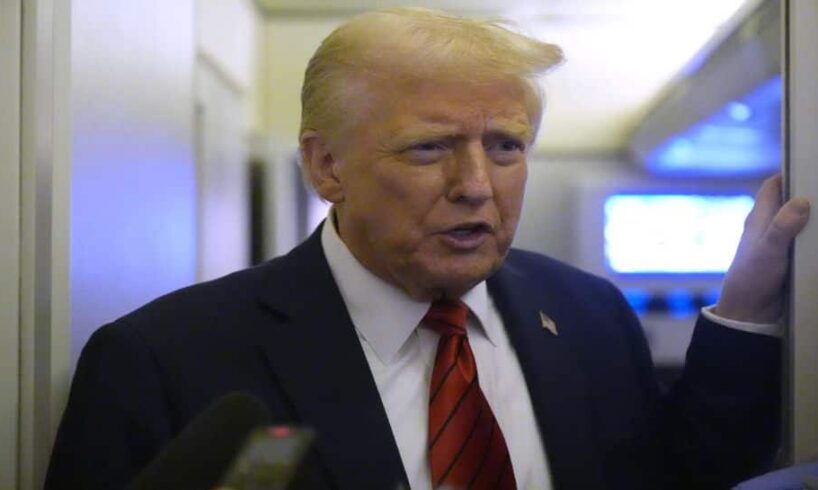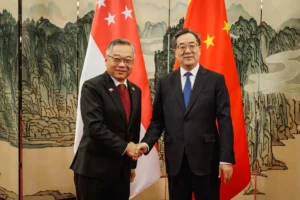
New Delhi: India has just been hit by a 25% tariff from the United States. Announced by U.S. President Donald Trump, the decision affects billions in exports. The news comes ahead of an important round of trade negotiations between the two countries. A penalty is also on the horizon. The reason? India’s defence and energy trade with Russia.
This latest action is seen as part of Trump’s “Liberation Day” trade strategy, designed to restructure trade arrangements in favour of the United States. The White House has been focusing on countries with significant trade surpluses and rigid non-tariff barriers, and India now finds itself among those targeted.
In a post on Truth Social, Trump conveyed frustration over what he considers to be excessively high tariffs imposed by India and restrictive trade conditions. He also pointed to India’s continued defence and energy imports from Russia, something he views as counterproductive, especially given the international demand for an end to the war in Ukraine.
Trump added that starting August 1, Indian goods would face a 25% tariff, along with an additional penalty linked to the Russia factor.
Although specific details of that penalty have not so far been released by the White House, U.S. officials indicated that it is meant to signal displeasure with India’s growing reliance on Russian imports, particularly oil and military hardware.
Impact on India’s Export Economy
India exports close to $87 billion worth of goods to the United States each year. The new tariff rate affects multiple key sectors, including pharmaceuticals, seafood, petrochemicals, leather, textiles and gems and jewellery.
Industry experts have said the development marks a serious challenge. Agneshwar Sen from EY India, as quoted by The Times of India, stated that the tariff hike was unfortunate, especially considering the growing strategic relationship between New Delhi and Washington in recent years.
He highlighted that certain export categories, particularly marine products, would feel the impact almost immediately.
Talking to the daily, agricultural economist Ashok Gulati expressed concern over how this would affect India’s shrimp industry. He suggested that the move highlighted unpredictability in Washington’s approach and warned that India’s textile exports would also face headwinds.
He believes other countries like Ecuador might gain ground in the U.S. market due to lower tariff barriers and logistical advantages.
GDP Growth Under Pressure
According to Garima Kapoor of Elara Capital, as cited by TOI, the 25% tariff, if sustained over the year, could reduce India’s GDP growth by as much as 20 basis points.
She observed that it remains unclear how many Indian export categories would be exempted from the full tariff or charged at different rates. For instance, products like steel, automobiles and pharmaceuticals may see differentiated treatment.
However, she warned that if pharma ends up included in the 25%, it could significantly hurt exports, considering the U.S. accounts for over 30% of India’s pharmaceutical shipments.
That said, Kapoor also emphasised the value of patience over urgency. She believed that a rushed deal requiring India to compromise on its agriculture or dairy sectors would have triggered deeper, long-lasting political and social consequences. In her view, a more comprehensive and well-balanced agreement, even if finalised later in the year, would serve India’s long-term interests far better.
New Delhi’s Response, Diplomatic Stance
India has acknowledged the U.S. president’s remarks and has begun reviewing the implications. The Ministry of Commerce and Industry has issued a statement indicating that while the comments had been noted, New Delhi remains focused on reaching a mutually beneficial agreement.
It reiterated India’s commitment to protecting the interests of farmers, MSMEs and entrepreneurs, while ensuring the national interest remains paramount.
Where India Stands Compared to Others
India’s tariff rate of 25% places it higher than most other U.S. trading partners. Japan and the European Union have secured rates as low as 15%, while countries like Vietnam and Indonesia face tariffs around 20%. Only China, at 30%, has been subjected to a higher rate than India.
Trade analysts believe India’s export competitiveness could be affected, especially in categories like textiles and electronics. However, some believe the impact on certain industries may be limited. Ajay Srivastava from the Global Trade Research Initiative told TOI that Indian pharmaceutical exports, which largely consist of generic drugs, might not suffer much despite the 25% duty, especially when compared to high-cost and branded European medicines that have lower tariff rates.
He also said that India’s position in smartphone exports remains relatively strong, with the United States importing largely from China and India and China’s 30% tariff not offering a clear advantage.
Temporary Setback or Lasting Policy Shift?
Government officials in New Delhi are treating the tariff hike as a possible interim measure. Sources indicated that discussions were continuing and that both countries had already completed five rounds of talks. A sixth round is scheduled for late August, when a U.S. delegation is expected to visit India.
Officials remain hopeful that a preliminary trade deal could be finalised by September or October.
Vijay Chauhan of Deloitte India, as cited by the daily, stated that Indian negotiators had remained firm in safeguarding national interests and that the upcoming meeting in New Delhi might be a turning point.
He stressed that the August 25 visit by U.S. trade representatives would be closely watched.
The Road Ahead
With tariffs now in place and more penalties expected, India’s exporters face turbulence in the months ahead.
However, both sides continue to engage. Whether the August-end discussions can shift momentum remains to be seen. Indian officials and industries, for now, are recalibrating their strategies, waiting for what could be a decisive phase in India-U.S. trade ties.





